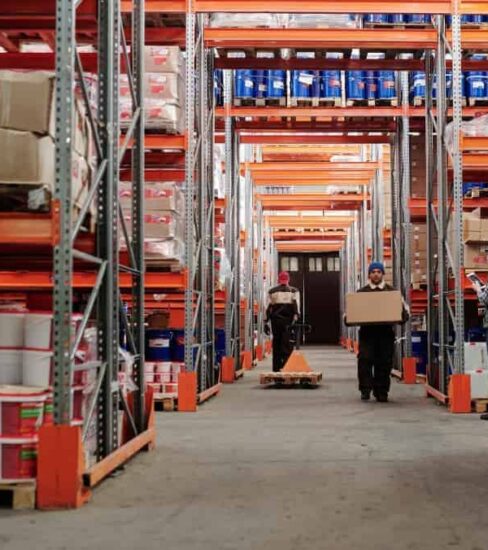According to a study by the IHL Group, inventory distortion costs $1.77 trillion globally. Inventory distortion is equivalent to 7.2% of all retail sales and is a significant cause for concern among retailers, distributors, and manufacturers. In addition, overstocking and understocking, both consequences of inventory distortion, can result in customer attrition and reduced brand loyalty. Inventory distortion can be avoided by managing retail replenishment smartly and efficiently.
There are several benefits to Replenishment management, ranging from reduced wastage to enhanced customer satisfaction. However, stock replenishment is a complex process that consists of various stages. Most of these can be automated with the help of an ERP that has an in-built replenishment module.
This article explores replenishment, its workings, and best practices to remember.
What is replenishment?
Replenishment, also known as inventory replenishment or stock replenishment, is a complex process that involves purchasing raw materials and inventory, monitoring demand, and working with third-party vendors who deliver quality raw materials on time.
Replenishment also refers to moving existing stock from a primary warehouse to other locations, such as distribution centers, retail stores, and secondary warehouses, helping fulfill orders on time. An optimal replenishment strategy ensures your orders are quickly fulfilled, increasing customer satisfaction and brand loyalty.
As replenishment depends on demand forecasts and order processing metrics, most retailers today rely on either standalone inventory management software or enterprise resource planning (ERP) with an in-built inventory management module to help automate purchasing, moving, and storing raw materials and finished products to replenish stock.
How does replenishment work?
Stock replenishment helps you reorder accurate amounts of raw materials and inventory based on different metrics related to customer demand and available stock levels. The process can be broken down into four stages:
● Demand forecasting: Demand planning ensures that required inventory levels are available to meet fluctuating demands influenced by volatile market conditions. Predictive analytics are required to make accurate forecasts that help businesses implement replenishment processes to efficiently deliver raw materials and inventory from upstream points to downstream locations.
● Warehouse management: Stock replenishment is integral to your larger warehouse management practices. Storing excessive stock in warehouses with limited space can increase your holding costs. Hence, you must only utilize the required amount of each SKU to avoid problems of both stockout and overstocking.
● Reordering: During periods of high demand, it's essential to have a replenishment policy to reorder inventory from other locations, third-party sources, and vendors when required.
● Continuous monitoring: Retailers must monitor various metrics continuously to keep up with fluctuating demand forecasts. Stock replenishment software can efficiently assist with this.
Replenishment management has a number of benefits such as:
● Using an inventory control system to manage replenishment ensures that you avoid issues of understocking or overstocking.
● Helps reduce expenses by eliminating product wastage, reducing return rates, and efficiently managing transportation costs.
● Reduce customer attrition rate by making timely deliveries and fulfilling orders efficiently.
What factors can impact stock replenishment?
Various factors can affect the timely restocking of stocks. 4 of these major factors include:
● Choosing the right inventory replenishment software and having the right system in place.
● Implementing an omnichannel replenishment strategy.
● Monitoring key data and metrics such as order demand and online shopping behavior. This is especially important during seasonal efforts where stock may be hard to replace.
● Choosing between a standalone inventory management tool or a full-fledged ERP. ERP inventory management module shares data with other CRM, sales and marketing, and finance modules, ensuring relevant data is updated across departments in real-time.
9 Best practices for a successful stock replenishment strategy
A stock replenishment strategy is about more than just using the most advanced ERP system available. It requires businesses to adopt best practices that ensure timely and efficient movement of raw materials and inventory that is up to par with market demands.
Here are 9 steps to implement a fail-proof stock replenishment strategy.
1. Set KPIs.
Key performance indicators (KPIs) related to warehouse management, inventory management, and stock replenishment help closely monitor when and what you should order and reorder. This requires a keen understanding of your logistics and access to continuous order and sales-related insights. The success of your replenishment process depends on which KPIs you choose to monitor, and that depends on processes unique to your organization.
2. Economic Order Quantity (EOQ).
Investopedia defines economic order quantity (EOQ) as the accurate amount of materials you should buy to meet demand without inflating costs related to holding, ordering, or shortages. Efficient inventory management helps maintain an acceptable EOQ that ensures you save resources for important needs instead of haphazardly using them for stock replenishment.
3. Just-in-time (JIT) inventory management.
Just-in-Time (JIT) enables you to work closely with suppliers to receive deliveries when production is about to start, or orders are placed. The premise of JIT depends on how efficient your ERP inventory management module is. Hence, choosing an ERP that tracks the micro-requirements of your retail, manufacturing, or distribution business is necessary.
4. ABC analysis: prioritizing high-value items.
ABC (Always Better Control) analysis is a popular inventory optimization strategy. The method includes classifying items into three categories: A, B, and C.
- A Items consist of products that have the highest annual consumption value, making them the highest of your priorities.
- B Items sell regularly but at a lower rate than A items. Hence, holding these products also costs you more.
- C Items sell infrequently and incur the highest inventory costs.
It's important for successful stock management to categorize your inventory to prevent losses and write-offs and ensure restocking.
5. Vendor-managed inventory (VMI) collaboration.
Vendor Managed Inventory (VMI) collaboration is an agreement with suppliers to help set upper and lower inventory limits. It reduces the effort and resources required to streamline and organize inventory based on varying demand metrics. VMI is easy to implement when data from sellers, vendors, and end-users are tied together to generate valuable insights that lead to better inventory control.
6. Demand forecasting
Demand forecasting is a technique that helps identify what consumers want by using predictive analysis techniques. The strategy uses historical and real-time data to make predictions regarding existing products and potential feature improvements. Access to demand forecasting insights helps businesses replenish only the necessary stock to achieve supply chain efficiency.
7. Seasonal inventory planning and promotions
Retail operations are often plagued by uncertainties, especially during the cusp of each shopping season. Seasonal inventory planning and promotions help you prepare for these uncertainties and replenish smartly. Unsold stock can easily be addressed by implementing seasonal promotions and clearance sales. An ERP's inventory management module can help you plan and implement promotions based on data such as customer loyalty level, product expiration date, and demand forecasting.
8. Track and record stock receipts
An essential strategy of successful replenishment management is to keep track of all stock receipts. These receipts can help you identify specific issues with the product or supplier when things go wrong. Inventory software enables you to track and record stock receipts, which can get unmanageable over time. Inventory tools automatically store information related to purchasing raw materials and stock, so you can retrieve historical data when required.
9. Automate with inventory management software.
Retail logistics is a complex and time-consuming process that cannot be managed manually. With increased demand and customer expectations, making deliveries and fulfilling orders on time is necessary. A key stock replenishment strategy is to automate various logistical and inventory management processes with a designated tool.
Manage your inventory with Priority's Replenishment Management System
Retailers, manufacturers, and distributors can encounter several problems while managing and replenishing stock. This can range from stockouts and overstocking to inaccurate receipts and lack of access to insight.
Priority's replenishment module helps you optimize restocking, transfer items between locations, and analyze different kinds of data allowing you make accurate forecasts. From setting minimum and maximum stock quantities to automating reordering stocks, our tool can help you increase efficiency and surpass customer expectations.
Contact us today to learn more about how our replenishment module can help you manage inventory efficiently.


